Cooling Menopause Symptoms with Herbal Support
Introduction
Menopause marks a profound shift in a woman’s life—physically, emotionally, and spiritually. It’s a natural stage of transformation, not a disease. But for many, the symptoms can feel anything but natural: hot flashes, night sweats, mood swings, anxiety, and fatigue can all take their toll.
While hormone replacement therapy (HRT) can offer relief for some, many women prefer a gentler, plant-based approach—one that supports the body’s transition naturally.
That’s where herbal allies come in. 🌿
Across cultures and centuries, women have turned to herbs to cool internal heat, balance hormones, calm the mind, and restore vitality. And modern research is beginning to validate what ancient healers knew intuitively: the right herbs can help the body find equilibrium again.
In this guide, we’ll explore the most effective herbs for cooling menopausal symptoms—exploring how they work, what the studies say, and how to use them safely as part of a holistic wellness routine. 💫
Looking for supplements for This? Click here.
🔥 Why Menopause Can Make You Feel “Hot”
Before diving into herbs, it helps to understand what’s happening behind those waves of heat.
When estrogen levels drop, the hypothalamus—the brain’s temperature control center—becomes hypersensitive. It starts interpreting small temperature changes as overheating, triggering a “cooling” response: blood vessels dilate, the heart rate rises, and sweat pours out to release heat.
This process causes hot flashes and night sweats.
Estrogen also influences neurotransmitters like serotonin and norepinephrine, which affect blood vessel function and mood. The result is a complex mix of physical and emotional sensations—heat, irritability, anxiety, and fatigue—that can feel overwhelming.
Herbal medicine doesn’t override these processes—it helps rebalance the underlying systems:
Calming the hypothalamus
Supporting adrenal function
Nourishing the liver for hormone detoxification
Reducing inflammation and oxidative stress
Let’s explore the top herbs that do exactly that. 🌿
🌺 Black Cohosh (Actaea racemosa)

🌿 The Cooling Root for Hot Flashes
Black cohosh is one of the best-researched herbs for menopause. Originally used by Indigenous North American women, it’s now widely prescribed in Europe as a first-line treatment for hot flashes.
How It Works
Black cohosh doesn’t act like estrogen. Instead, it regulates serotonin and dopamine receptors in the brain, helping stabilize mood and temperature perception. It also reduces luteinizing hormone (LH) surges, which are associated with hot flashes.
The Research
Dozens of clinical trials show black cohosh can reduce the frequency and severity of hot flashes by up to 50%. Women also report better sleep and calmer moods.
How to Use
Take 20–40 mg of standardized extract daily (often sold under names like Remifemin®). It usually takes 4–6 weeks to notice improvement.
Bonus Tip
Combine black cohosh with sage or red clover for extra cooling synergy. 🌸
🌼 Red Clover (Trifolium pratense)
🌿 Gentle Estrogen Balance
Red clover is rich in isoflavones—plant compounds that mimic the effects of estrogen in a much gentler way. These phytoestrogens bind to estrogen receptors and help regulate hormonal fluctuations.
The Research
A 2016 PLOS One study found that red clover extract reduced hot flash frequency by 44% after 12 weeks. It also improved sleep and anxiety scores.
How It Helps
Red clover cools internal heat, soothes dryness, and supports bone and heart health—two systems that can weaken post-menopause.
How to Use
Take 40–80 mg daily of standardized red clover extract (containing at least 8% isoflavones).
Pair With
Combine with flaxseed or soy isoflavones for broader hormonal support. 🌿
🌸 Sage (Salvia officinalis)
🌿 For Sweating and Overheating
Sage is a classic herb for excess sweating and heat. It contains natural compounds that influence the acetylcholine system, calming the overactive sweat glands triggered during menopause.
The Research
A clinical trial published in Advances in Therapy found that fresh sage extract reduced hot flash frequency by 64% after eight weeks.
How It Works
Sage acts as a natural antiperspirant from within, reducing both the intensity and frequency of hot flashes and night sweats.
How to Use
Take 300–600 mg of standardized extract daily or drink sage tea (1 tsp dried herb per cup of hot water).
Tip
Try combining sage with lemon balm for extra nervous system calm. 🍃
Looking for supplements for This? Click here.
🌺 Dong Quai (Angelica sinensis)
🌿 The “Female Ginseng” of Traditional Chinese Medicine
Dong quai has been used for thousands of years in TCM to tonify the blood and balance yin and yang—concepts that align with modern ideas of hormone regulation and circulation.
How It Works
Dong quai contains coumarins and ferulic acid, which support blood flow and reduce muscle tension. It also acts as a mild phytoestrogen, helping balance low estrogen states.
The Research
Studies show dong quai may reduce hot flash intensity and improve overall well-being when combined with other herbs like black cohosh or licorice root.
How to Use
Take 500–1500 mg of root extract daily.
Caution
Avoid if you’re on blood thinners, as it may increase bleeding risk.
🌼 Licorice Root (Glycyrrhiza glabra)
🌿 For Hormonal Adaptation and Stress Relief
Licorice root is a deeply nourishing adaptogen that helps regulate cortisol—the stress hormone that often rises when estrogen falls.
How It Works
Licorice’s natural compounds mimic mild estrogenic effects while calming adrenal fatigue. It’s particularly effective when hot flashes are linked to stress or emotional tension.
The Research
A 2012 study in Iranian Journal of Pharmaceutical Research found that licorice extract reduced both frequency and duration of hot flashes after 8 weeks.
How to Use
Take 100–300 mg of standardized extract daily.
Caution
Avoid if you have high blood pressure or kidney issues, as licorice can raise sodium retention. 🌿
🌸 Maca Root (Lepidium meyenii)
🌿 The Peruvian Energy Root
Maca isn’t a phytoestrogen—it’s an adaptogen that helps balance the entire endocrine system. It supports the hypothalamus and pituitary glands, which regulate hormones throughout the body.
The Research
A 2008 study published in Menopause found that maca reduced hot flashes and night sweats while improving energy, libido, and mood.
How to Use
Take 1.5–3 g daily (powder or capsule). Choose gelatinized maca for better absorption.
Bonus
Pairs beautifully with ashwagandha for stress resilience. 🌿
🌿 Ashwagandha (Withania somnifera)

🌿 For Anxiety, Sleep, and Stress-Triggered Hot Flashes
Ashwagandha is one of Ayurveda’s most beloved adaptogens. It calms the nervous system, balances cortisol, and helps you adapt to physical and emotional stressors.
How It Works
By supporting the adrenal glands, ashwagandha prevents cortisol spikes that can worsen hot flashes, mood swings, and insomnia.
The Research
A 2021 randomized trial found that 300 mg of KSM-66 ashwagandha twice daily improved overall menopausal symptoms, sleep, and quality of life.
How to Use
Take 300–600 mg of standardized extract daily.
Pro Tip
Combine with magnesium glycinate or L-theanine for deep relaxation. 🌙
🌺 Chaste Tree Berry (Vitex agnus-castus)
🌿 For Hormone Communication and Emotional Balance
Vitex helps fine-tune communication between the pituitary gland and the ovaries. It gently encourages progesterone production, helping balance the estrogen-progesterone ratio during perimenopause.
The Research
A 2010 study showed that Vitex significantly reduced hot flashes, irritability, and breast tenderness.
How It Helps
Vitex is especially useful for women in early perimenopause, when cycles are irregular and PMS-like symptoms coexist with hot flashes.
How to Use
Take 20–40 mg daily of standardized extract. 🌿
🌼 Rhodiola Rosea
🌿 For Fatigue and Mental Clarity
If menopause has you feeling drained, foggy, or unmotivated, rhodiola can help. This adaptogenic herb supports mitochondrial energy production and enhances mental alertness.
How It Works
Rhodiola improves stress resilience and neurotransmitter balance, especially serotonin and dopamine—both affected by falling estrogen.
The Research
In a 2017 Phytomedicine study, rhodiola improved fatigue, cognitive function, and emotional well-being in midlife women under stress.
How to Use
Take 200–400 mg of standardized extract daily (with breakfast).
Combine With
Ashwagandha or maca for full-spectrum adaptogenic support. ⚡
🌸 Evening Primrose Oil (Oenothera biennis)
🌿 For Hot Flashes, Skin, and Mood
Evening primrose oil (EPO) is rich in gamma-linolenic acid (GLA)—a fatty acid that helps regulate prostaglandins, the compounds involved in temperature control and inflammation.
The Research
A 2013 Archives of Gynecology and Obstetrics study found that 500 mg of EPO twice daily reduced hot flash severity and improved quality of life in menopausal women.
How to Use
Take 500–2000 mg daily with meals.
Bonus
Also improves skin hydration, joint comfort, and emotional stability. 🌺
🌿 Lemon Balm (Melissa officinalis)
🌿 For Sleep and Nervous System Cooling
Lemon balm soothes the nervous system, relieves restlessness, and helps regulate sleep patterns disrupted by hormonal shifts.
The Research
A 2013 study in Complementary Therapies in Medicine found lemon balm improved sleep and anxiety scores in menopausal women.
How to Use
Enjoy lemon balm tea before bed or take 300–600 mg extract daily.
Combine With
Sage or passionflower for cooling calm at night. 🌙
🌸 Green Tea (Camellia sinensis)
🌿 For Cooling and Antioxidant Support
Green tea offers gentle cooling, mental clarity, and metabolism support. Its catechins reduce inflammation and oxidative stress—both linked to hot flashes and fatigue.
The Research
Green tea polyphenols have been shown to support bone density, cardiovascular health, and cognitive function in menopausal women.
How to Use
Drink 1–2 cups daily, or take 250–500 mg extract standardized for EGCG.
Tip
Avoid drinking it late at night to prevent insomnia. ☕
🌼 Peppermint and Spearmint
🌿 For Instant Cooling Relief
These herbs don’t balance hormones—but their menthol compounds provide an immediate cooling sensation, both internally and externally.
How to Use
Drink peppermint tea for digestive and temperature comfort.
Use peppermint essential oil (diluted) on your neck or temples during a flash.
Combine With
Sage or lemon balm for a refreshing herbal infusion. 🌿
💕 Creating Your Cooling Herbal Routine
Herbal support works best when it’s consistent, gentle, and holistic.
Morning 🌞
Rhodiola or maca for energy and focus
Green tea or matcha for antioxidants
Omega-3 or evening primrose oil with breakfast
Afternoon 🌿
Sage or red clover tea
Magnesium-rich snack (pumpkin seeds, almonds)
Evening 🌙
Black cohosh capsule with dinner
Lemon balm or passionflower tea before bed
Cool bedroom and mindfulness breathing
This daily rhythm nourishes your body’s cooling and calming systems—helping you move through menopause with grace and vitality. 🌺
⚠️ Safety and Precautions
While herbs are generally safe, it’s important to use them mindfully:
Always buy from reputable brands that use standardized extracts.
Consult your healthcare provider if you’re on medications or have liver issues.
Avoid combining multiple phytoestrogenic herbs (like red clover and soy) in high doses.
Track your symptoms to see what combination works best for your body.
Menopause is personal—there’s no one-size-fits-all herb. Start slowly, observe how your body responds, and adjust accordingly. 🌿
🌸 The Emotional and Spiritual Cooling
Menopause isn’t just a physical shift—it’s an emotional and spiritual initiation. As your body changes, your energy patterns shift too. Many women describe it as a time of awakening, of shedding old identities and learning to live in deeper harmony with their bodies.
Cooling herbs like sage, lemon balm, and black cohosh don’t just regulate heat—they symbolically cool the internal fire, helping you approach this transformation with peace instead of resistance.
Through herbal support, rest, and self-compassion, menopause becomes not a storm to endure, but a season of renewal. 🌙💖
🌿 Final Thoughts
Herbal medicine offers a timeless, natural approach to managing menopause symptoms—one that honors the body’s wisdom instead of fighting it.
Whether you choose black cohosh for hot flashes, red clover for hormonal balance, sage for sweating, or ashwagandha for stress relief, these plants work together to soothe, balance, and empower.
Nature doesn’t rush, and neither should you. With consistent care and herbal support, you can cool the heat, calm the mind, and embrace this new phase of womanhood—vibrant, grounded, and beautifully at ease. 🌿✨
Looking for online therapy ? Click Here.
📚 References
Wuttke, W., et al. (2003). Cimicifuga racemosa extract and vasomotor symptoms. Maturitas, 44(S1), S67–S77.
Tredici, F., et al. (2016). Red clover extract and menopausal vasomotor symptoms. PLOS One, 11(3), e0150467.
Bommer, S., et al. (2011). Sage extract and menopausal sweating: Clinical trial results. Advances in Therapy, 28(6), 490–500.
Shahnazi, M., et al. (2013). Effect of black cohosh on hot flashes. Complementary Therapies in Clinical Practice, 19(4), 204–208.
Panossian, A., & Wikman, G. (2010). Adaptogens and the molecular mechanisms of stress protection. Pharmaceuticals, 3(1), 188–224.
Farzaneh, F., et al. (2013). Evening primrose oil and menopausal symptoms. Archives of Gynecology and Obstetrics, 288(5), 1075–1080.
Freeman, E. W. (2015). Pathophysiology and treatment of menopausal symptoms. Menopause, 22(11), 1211–1223.
Lemaire, K., et al. (2018). Herbal therapies and hormonal health in midlife women. Maturitas, 115, 75–82.
Huntley, A. L., & Ernst, E. (2003). Herbal treatments for menopause: Systematic review. Menopause, 10(1), 37–44.
Chenoy, R., et al. (1994). Effect of evening primrose oil on menopausal flushes. Obstetrics & Gynecology, 84(6), 104–108.
Related Posts
-
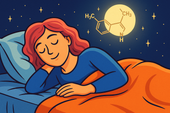
Melatonin and Menopause: Restoring Your Sleep Cycle
Nutrients are the foundation of hormone balance and energy. Learn how vitamins, minerals, and whole foods like greens, salmon, and berries nourish women’s bodies during menopause and beyond — restoring vitality, mood, and strength. 🌿🥗
-
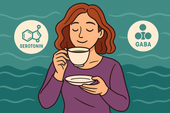
How L-Theanine Helps With Menopausal Anxiety
Science continually deepens our understanding of the human body, from hormones to neurotransmitters. Discover how evidence-based research shapes modern wellness — bridging natural medicine, neuroscience, and hormone balance for healthier living. 🔬🌿
-

Can Ginkgo Biloba Improve Memory in Menopausal Women?
Hormone therapy can be a powerful tool for easing menopause symptoms and restoring balance. Learn how it works, the types available, and how to combine it safely with lifestyle and natural support for optimal well-being. 🌸💊
-

B Vitamins for Mental Clarity During Menopause
Nutrients are the foundation of mental and physical balance during menopause. Discover how vitamins, minerals, and whole foods like leafy greens, fish, nuts, and citrus can fuel energy, clarity, and calm while supporting hormonal health. 🌿✨
-
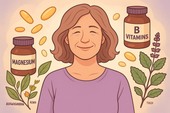
Mood Swings and Menopause: Natural Nutrient Support
Probiotics do more than support digestion — they help balance mood, hormones, and immunity too. Learn how a healthy gut microbiome can ease menopause symptoms, boost energy, and improve emotional resilience naturally. 🌿🦠
-

Brain Fog in Menopause: Supplements That May Help
Supplements can be powerful allies in restoring balance, energy, and focus—especially during menopause. Learn how nutrients like omega-3s, vitamin D, magnesium, and herbal adaptogens work together to support brain health, reduce stress, and promote lasting vitality. 🌿💊
-
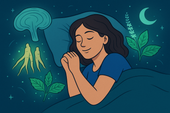
Adaptogen Stacks for Reducing Night Sweats
Hormone detox isn’t about cleansing your body—it’s about restoring flow. Learn how the liver, gut, and endocrine systems work together to eliminate hormone buildup and how herbs like milk thistle, dandelion, and schisandra support balance, clarity, and natural vitality. 🌿💫
-
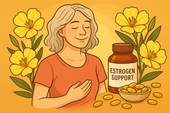
Evening Primrose Oil and Menopause: What the Research Says
Hot flashes are one of the most common—and frustrating—symptoms of menopause. Discover what causes them, why the body’s “internal thermostat” becomes unbalanced, and the natural supplements and lifestyle shifts that can help you cool down, rest better, and feel more in control. 🔥💧
-

How Black Cohosh Helps with Menopausal Symptoms
Sleep disturbances are among the most exhausting symptoms of menopause—but they don’t have to rule your nights. Discover how natural strategies and calming supplements can help you fall asleep faster, stay asleep longer, and wake up feeling truly restored. 🌙💤
-
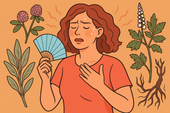
Natural Supplements That May Reduce Hot Flashes
Hot flashes can disrupt sleep, confidence, and daily comfort—but natural relief is possible. Discover the best research-backed supplements like black cohosh, red clover, and licorice root that may reduce hot flashes, balance hormones, and restore inner calm during menopause. 🌿💫
-

Omega-3s and Menopause: Supporting Mood and Inflammation
Omega-3 fatty acids are essential for hormonal harmony, brain function, and emotional balance—especially during menopause. Learn how these healthy fats reduce inflammation, support heart health, and restore calm, vitality, and focus through every stage of midlife. 🌊💫
-

The Role of Vitamin D in Menopausal Health
Vitamin D plays a powerful role in menopausal health—supporting bone strength, hormone balance, and mood stability. Discover how optimizing your vitamin D levels can improve sleep, energy, and emotional well-being while protecting long-term vitality through every stage of menopause. 🌞💪
-
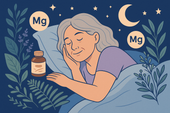
Magnesium for Menopause: Relaxation, Sleep, and Hormonal Support
Self-regulation is the art of staying calm, centered, and in control—no matter what life throws your way. Learn how to strengthen emotional balance, manage stress responses, and cultivate inner peace through mindful techniques that reconnect your heart, body, and brain. 🌿💫
-
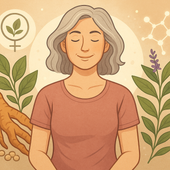
Can Adaptogens Like Ashwagandha Ease Menopausal Symptoms?
Brain fog during menopause can make even simple tasks feel overwhelming—but you’re not losing your sharpness, your hormones are simply shifting. Discover how adaptogens like ashwagandha and key nutrients can restore mental clarity, balance cortisol, and bring calm focus back to your day. 🌿🧠
-
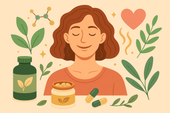
Supplements That Support Hormonal Balance During Menopause
Herbal supplements have supported women’s health for centuries—and modern science is finally catching up. From ashwagandha and maca to red clover and rhodiola, discover how nature’s most trusted herbs can calm stress, balance hormones, and enhance energy through every life stage. 🌿✨
-
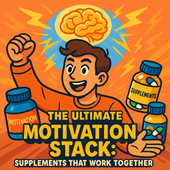
The Ultimate Motivation Stack: Supplements That Work Together
Discover how therapy helps restore motivation, focus, and emotional balance alongside supplement and mindset strategies. This empowering article explores how addressing thought patterns and emotional blocks through therapy can complement biochemical tools for long-term drive and well-being. 🧠💬
-

Entrepreneurial Drive: Can Supplements Help You Avoid Burnout?
Entrepreneurship demands energy, creativity, and mental resilience—but without balance, it leads to burnout. This in-depth article explores how nootropic supplements, adaptogens, and mindset tools can help entrepreneurs sustain motivation, manage stress, and keep their drive sharp for the long haul. 🚀💼
-

Supplements for Students: Staying Motivated Through Exams
Feeling burned out before finals? Discover how the right supplements can help students stay focused, calm, and motivated through exam season. This guide explores science-backed nutrients, brain-boosting herbs, and mindset tools that fuel clarity, memory, and stress resilience when it matters most. 🎓⚡
-
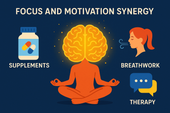
How Nootropic Stacks Can Enhance Drive and Focus Together
Discover how nootropic stacks can reignite both your drive and focus by balancing key neurotransmitters like dopamine and acetylcholine. This in-depth guide explores the science behind motivation, how supplements enhance cognitive performance, and how breathwork and therapy complete the picture for lasting mental clarity. 🧠✨
-
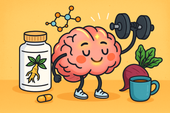
Natural Pre-Workout Supplements for Motivation and Mental Sharpness
Adaptogens are nature’s stress balancers 🌿 — powerful herbs like Ashwagandha, Rhodiola, and Holy Basil that help your body stay calm, focused, and resilient. By regulating cortisol and supporting energy balance, they boost motivation, endurance, and emotional stability — naturally. 🌞🧠
-
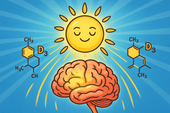
The Role of Vitamin D in Mental Drive and Ambition
Motivation is more than mindset — it’s energy in motion ⚡🧠. It comes from a balance of biology, emotion, and purpose. When your brain, body, and habits align, drive becomes effortless. Learn how to spark consistency, overcome dips, and build unstoppable momentum naturally. 🌿✨
-
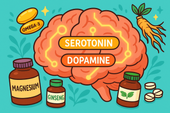
Serotonin, Dopamine, and Motivation: Can Supplements Really Help?
Ginseng is the ultimate vitality root 🌿⚡ — long praised for enhancing focus, energy, and motivation without the crash. By balancing stress hormones, boosting dopamine, and improving brain oxygenation, this adaptogenic powerhouse helps you feel clear, strong, and ready to take action. 🧠✨
-

How Ginseng Helps Support Drive, Motivation, and Energy
Ginseng is nature’s endurance root 🌿⚡ — a timeless adaptogen that fuels focus, drive, and resilience from the inside out. By balancing cortisol, boosting dopamine, and supporting mitochondrial energy, ginseng helps you feel clear, strong, and steady — no crash, just sustainable vitality. 🧠✨
-
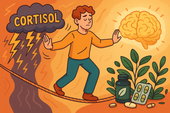
The Stress–Motivation Connection: Supplements That Balance Cortisol
Vitamin D — the “sunshine nutrient” ☀️ — plays a crucial role in mental health, motivation, and energy regulation. Low levels can lead to fatigue, low mood, and sluggish focus. Learn how sunlight, nutrition, and supplementation can restore your inner light and boost emotional balance naturally. 🌿🧠
-
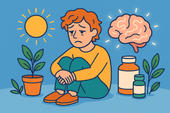
When Low Mood Drains Your Drive: Natural Support Options
Vitamin D is more than the “sunshine vitamin” ☀️ — it’s a key player in mood, motivation, and overall brain health. Low levels can lead to fatigue, low drive, and seasonal sadness. Learn how sunlight, supplements, and nutrition can help restore balance and lift your emotional energy naturally. 🌿🧠
-
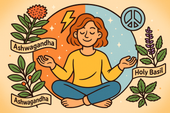
How Adaptogenic Herbs Help You Stay Consistent
Adaptogens are nature’s resilience enhancers 🌿. From Ashwagandha to Rhodiola and Holy Basil, these herbs help your body adapt to stress, balance cortisol, and maintain steady energy. Learn how they build inner stability — keeping your focus, mood, and motivation consistent through life’s ups and downs. ⚡🧘
-

Can Creatine Boost Mental Drive as Well as Physical Performance?
IQ, or intelligence quotient, measures more than problem-solving — it reflects how efficiently your brain processes, adapts, and connects ideas 🧠⚡. While genetics play a role, lifestyle, nutrition, and brain health all influence cognitive performance. Learn how to support mental sharpness and cognitive growth naturally. 🌿✨
-
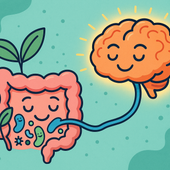
The Link Between Gut Health and Motivation: Probiotics Explained
Serotonin — the “feel-good” neurotransmitter 🌞 — plays a powerful role in mood, motivation, and overall emotional balance. Produced mostly in the gut, it connects digestion, happiness, and focus through the gut-brain axis. Learn how to naturally support serotonin for calmer energy and lasting motivation. 🌿✨
-
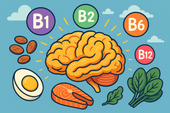
How B Vitamins Fuel Motivation and Energy at the Cellular Level
B vitamins are the body’s natural energy engines ⚡. They convert food into fuel, support dopamine for motivation, and power brain cells at the mitochondrial level. From B1 to B12, these nutrients help you stay focused, resilient, and full of drive — every single day. 🌿🧠
-
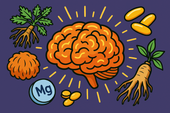
Supplements That Support Mental Endurance for Long Projects
Mindset is more than motivation — it’s the mental framework that shapes how you respond to challenges and pursue goals 🌿🧠. A growth mindset turns obstacles into opportunities, while a fixed mindset fuels self-doubt. Learn the science behind mental resilience and how to cultivate a mindset that sustains focus, creativity, and long-term success. ✨
-

How Omega-3s Influence Drive, Creativity, and Problem-Solving
Sleep isn’t just rest — it’s the foundation of mental clarity, emotional balance, and motivation 🌙💤. During deep sleep, your brain resets stress hormones, consolidates memory, and clears away mental fog. Learn how better sleep supports neuroplasticity, creativity, and lasting energy for your day. 🌿✨
-
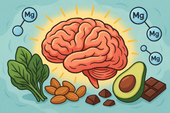
Can Magnesium Improve Your Focus and Motivation?
Caffeine is the world’s favorite stimulant ☕ — boosting alertness, sharpening focus, and lifting motivation within minutes. But there’s real science behind that morning cup. Learn how caffeine works on adenosine and dopamine, how to avoid the crash, and how to use it strategically for sustained energy and mental performance. ⚡🧠
-
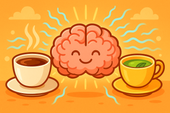
The Role of L-Theanine and Caffeine in Daily Motivation
Cortisol — often called the “stress hormone” — is both your alarm system and your reset button ⚡. It keeps you alert in the morning and helps you recover after challenges, but when it stays high too long, it drains your mood and energy. Learn how to balance cortisol naturally for steady focus, calm, and motivation. 🌿
-
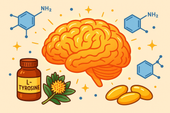
Supplements That Support Dopamine for Drive and Reward
Curcumin — the golden compound in turmeric — is more than a spice 🌿✨. It’s a powerful anti-inflammatory that protects dopamine neurons, supports brain clarity, and enhances mood. Learn how curcumin’s antioxidant properties help stabilize energy, reduce brain fog, and promote emotional resilience naturally. 🌼
-
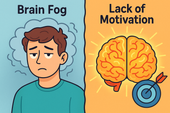
Brain Fog vs Lack of Motivation: What’s Really Holding You Back?
Hormones are the body’s invisible messengers — shaping energy, mood, focus, and motivation 🧠🌿. When they’re balanced, you feel clear, confident, and emotionally steady. Learn how key hormones like cortisol, serotonin, dopamine, and estrogen interact to influence your mental well-being and what you can do to keep them in harmony naturally. ✨
-

Supplements for Staying Collected During Disagreements
Science helps us understand why we feel, react, and change 🌿🧠. From brain chemistry to neurotransmitters and hormones, every emotional response has a biological root. Explore how research in neuroscience and psychology reveals practical ways to stay balanced, focused, and emotionally strong in daily life. 🔬✨
-

Managing Anger While Traveling
Supplements can help calm your nervous system and keep your emotions balanced while on the go 🌿. From magnesium and ashwagandha to L-theanine and omega-3s, learn how natural nutrients support stress resilience, focus, and emotional control — even through long flights, delays, and unpredictable travel days. ✈️
-

How to Keep Your Temper in Online Debates
Supplements can do more than fill nutritional gaps — they can help balance your energy, focus, and stress response naturally 🌿. From adaptogens to amino acids, the right nutrients support your brain chemistry and hormonal harmony for calm, steady productivity. Discover how supplements can build long-term resilience without the crash. ⚡🧠
-

Supplements to Stay Calm Before Public Speaking
Breathwork is one of the simplest yet most powerful tools for calming pre-performance stress 🌬️. By slowing and deepening your breathing, you lower cortisol, steady your heartbeat, and re-center your mind. Learn the science behind how controlled breathing activates your parasympathetic nervous system — helping you speak, perform, or focus with grounded confidence. 🌿
-

How to Handle Customer Service Stress Without Losing Your Cool 💬🧘♀️
Customer service can test even the calmest person’s patience. 😤 Learn how to handle difficult clients and daily pressure without losing your cool — through better mindset management, calming breathwork, and practical communication tools. Stay grounded, protect your energy, and transform stress into strength. 🌿
-
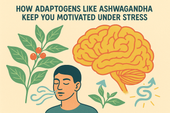
How Adaptogens Like Ashwagandha Keep You Motivated Under Stress
Feeling overwhelmed and unmotivated? 🌿 Discover how adaptogens like Ashwagandha can help you stay centered, focused, and energized under stress. Learn how supplements, breathwork, and therapy work together to restore your natural motivation and help you thrive — even during life’s toughest moments. 💪✨
-
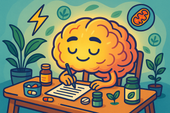
Supplements That Support Long-Term Productivity Without the Crash ⚡🌿
Cortisol — your body’s main stress hormone — can be both your best friend and worst enemy. ⚡ When balanced, it keeps you focused, energized, and ready to act. But when it stays high for too long, it leads to fatigue, anxiety, and emotional crashes. Learn how to regulate cortisol naturally through supplements, sleep, and stress management to maintain calm, steady productivity. 🌿
-

Why Energy Levels and Motivation Go Hand in Hand ⚡🧠
B-vitamins are the brain’s spark plugs 🔋. They turn food into fuel, support neurotransmitter production, and keep your mood, energy, and focus balanced. Learn how vitamins like B6, B9, and B12 work together to power the nervous system, reduce fatigue, and keep motivation high. 🌿
-
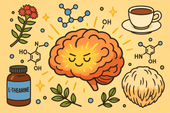
The Science of Motivation: Can Nootropics Help You Stay Focused? 🧠⚡
Nootropics are nature’s tools for sharper thinking and sustainable focus 🧠🌿. From Rhodiola and Lion’s Mane to L-theanine and Bacopa, these brain-boosting compounds enhance motivation, memory, and stress resilience. Learn the science behind how nootropics work — and how to use them safely for peak mental performance and clarity. ⚡
-
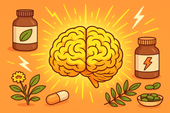
How Natural Supplements Can Boost Your Daily Drive
Cortisol is your body’s main stress hormone — powerful, necessary, but often misunderstood. ⚡ When balanced, it keeps you alert and energized; when chronically elevated, it drains mood, motivation, and focus. Learn how to regulate cortisol naturally through nutrition, supplements, and calming lifestyle habits for steady energy and emotional balance. 🌿
-
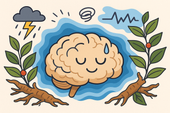
Ashwagandha for Stress and Low Mood
Breathwork is more than a relaxation tool — it’s a way to rewire your nervous system. 🌬️ Through intentional breathing, you can reduce stress hormones, improve focus, and calm emotional turbulence. This guide explores the science of breathwork and its powerful effects on mental clarity, resilience, and emotional regulation. 🌿
-
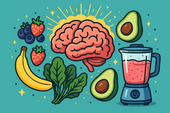
Mood-Boosting Smoothie Recipes
Your blood sugar affects far more than energy — it influences mood, focus, and emotional stability too 🍎. Learn how maintaining balanced glucose levels supports brain health, reduces anxiety, and prevents emotional crashes. Discover the foods and habits that keep your mind calm and your energy steady throughout the day. 🌿
-

How Healthy Fats Support Brain Function
Your brain thrives on healthy fats 🧠💧. From omega-3s to MCTs, the right fats enhance focus, memory, and mood while protecting against inflammation and aging. This article explores how good fats — like those from olive oil, salmon, avocado, and nuts — build sharper thinking, emotional balance, and lasting brain vitality. 🌿
-
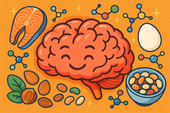
The Role of Protein in Mental Clarity
Protein isn’t just for muscles — it’s for your mind. 🧠 This guide explores how amino acids from high-quality protein fuel neurotransmitters, stabilize mood, and sharpen focus. Learn how balanced protein intake supports dopamine, serotonin, and energy regulation to boost mental clarity and emotional stability naturally. 🍳🌿

















































